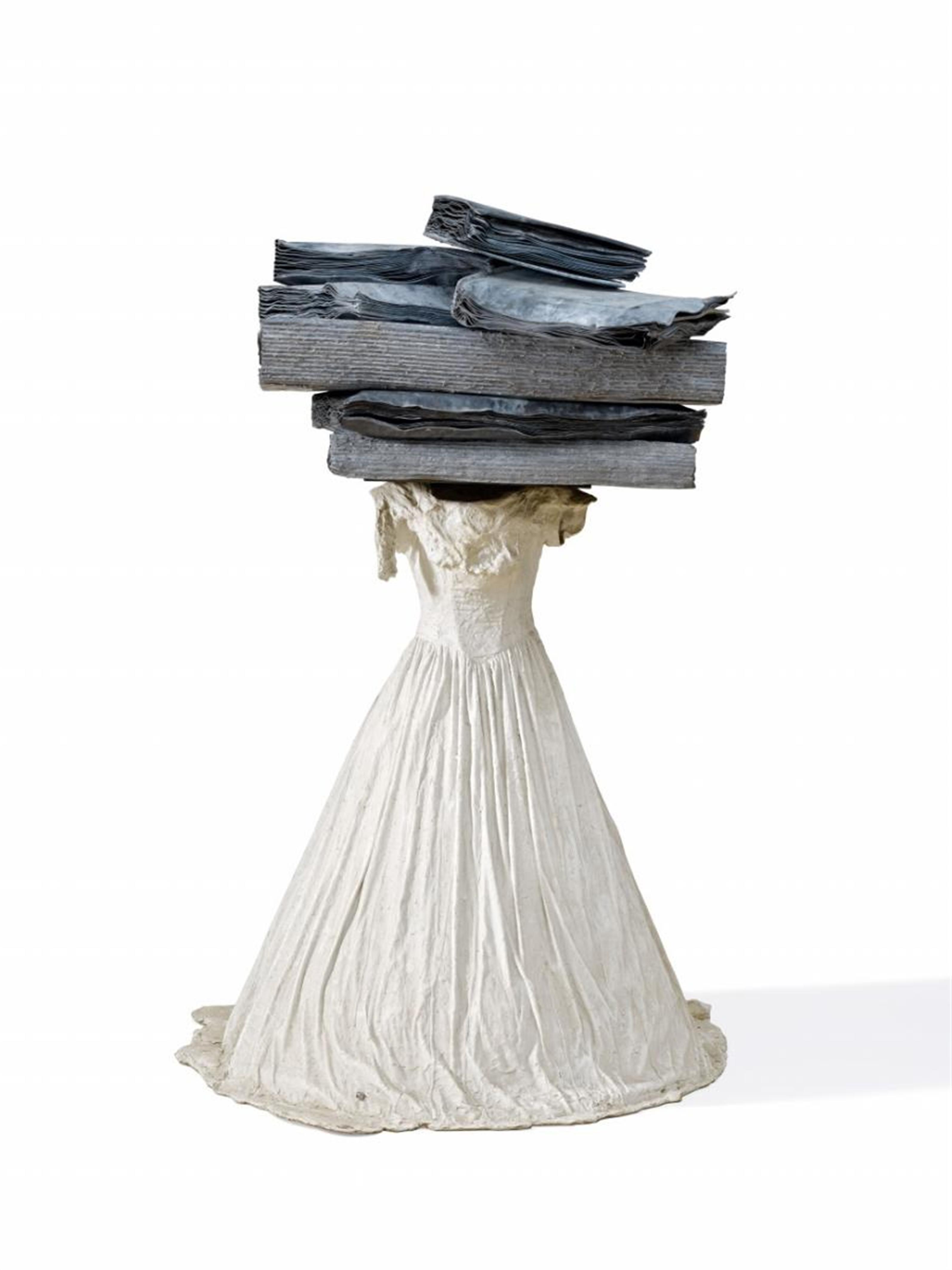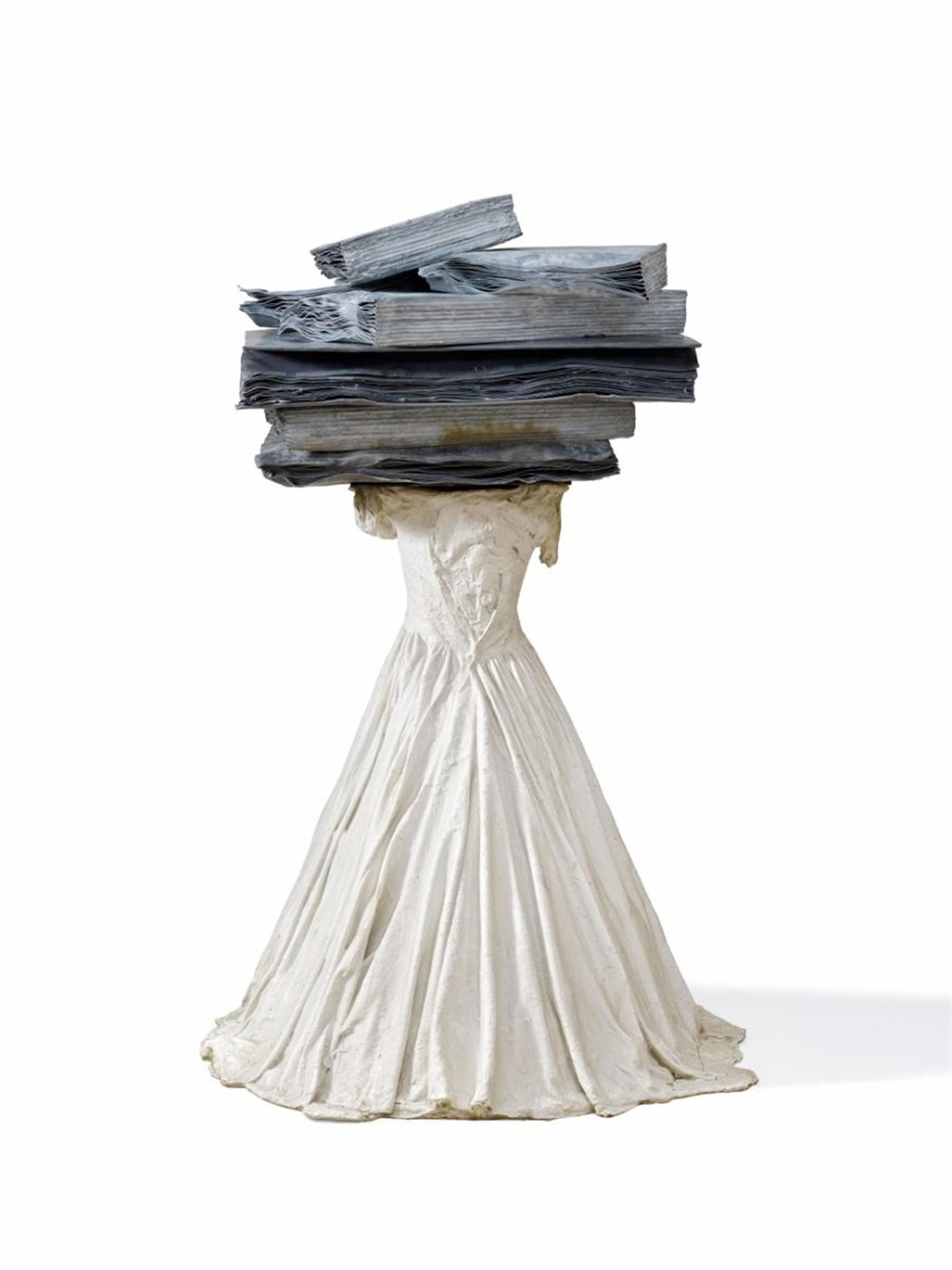Anselm Kiefer
Sappho
2002-2005
Steel, plaster, polyester, lead books. Approx. 198 cm.
Unlike hardly any other contemporary artist, Anselm Kiefer analyses his work with reference to the history, knowledge, culture and identity of human beings. Women appear repeatedly in his works, with other famous examples being 'Margarethe' and 'Sulamith' from Paul Celan's story 'Die Todesfuge', and the mythological demon 'Lilith'. Kiefer's concern with historically verifiable women first showed itself in the installation 'Frauen der Revolution' from 1983, which shared the theme and name with a painting and several books. The installation consisted of 13 empty beds, covered with a sheet of lead, with a water-filled indentation in the middle. The heroines of the French Revolution, some tragic, are not present, but are identifiable by a name plate placed by every bed. He began his famous series of works 'Die Frauen der Antike' in the mid-1990s, where his protagonists, as with the ancient poetess Sappho in the present work, are ultimately resurrected. Sappho lived from 630/570 B.C. on the island of Lesbos and belongs to the most fascinating female figures of world history; numerous Greek and Roman busts from the antique bear witness to her great reputation already at that time. She is also mentioned in texts by famous poets such as Horace, Catullus and Plato. In her passionate and artistically written poems, Sappho discussed the issues of same-sex love, alongside the hymnal praising of gods. The meter 'Sapphic stanza', which was named after her, was already in use by the poets of the antique. According to tradition, Sappho met a tragic end: her love for the mythological ferryman Phaon having been rejected, she threw herself into the sea from a cliff on the island of Leukas and drowned.
In Kiefer's work, Sappho appears as a secretive apparition from another time, whose symbolic history and inherent higher wisdom are made vivid. For the artist she is also 'a monument to all the unknown women poets' (Anselm Kiefer, in: Jackie Wullschlager, The art of Anselm Kiefer rises from the ruins, in: Financial Times, 4 July 2009). The floor-length, slightly flared plaster dress underlines the femininity of the protagonist and visualises various time periods - it could be as much a modern wedding dress as a garment from past centuries, as suggested by the crinoline and corset. The surface of the white plaster garment is most strikingly reminiscent of antique sculpture, and so Kiefer brings the past completely into the present. Even though the figure carries seven lead books on her shoulders, Kiefer still manages to give this heavy weight an impression of ethereal lightness. As in the tradition of classical western iconography, Kiefer is using these books as reference to Sappho's role as a generator of literature and knowledge. Alongside straw, ash and sand, lead has been a prominent material in Kiefer's oeuvre since the 1970s. He values the metal's multiple artistic uses and the cultural semantic content: 'Lead is found in Kiefer's work as both a medium and a metaphor for a whole range of processes and ideas - material, physical, mental and spiritual. Its very presence conveys and actualises the memory of recollected ideas and juxtaposes these with its own material weight. It does this all the more effectively because its natural qualities lend themselves to many types of manipulation and preserve tracts of the transformations it has undergone'. (Daniel Arasse, Anselm Kiefer, London and New York 2001, p.248).
Provenance
Private collection, Hesse
Exhibitions
Koblenz 2012 (Ludwig Museum im Deutschherrnhaus), Anselm Kiefer, Memorabilia, exhib.cat., pp.96/97 with colour illus.




